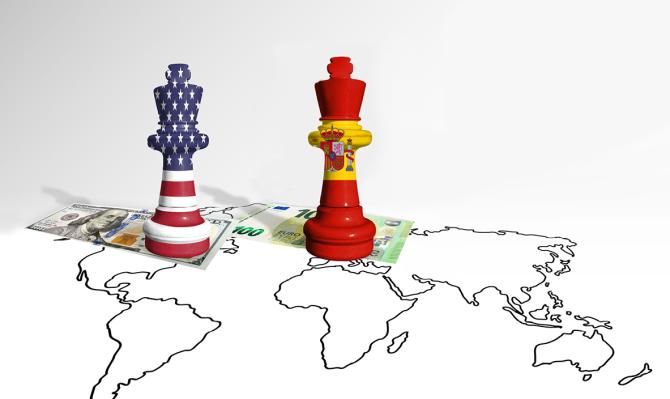Impact of tariff hikes on Spanish exports to the US: which sectors could be the hardest hit?
In Spain, exports of goods to the US accounted for 4.9% of total exports in 2023 and 1.25% of GDP. As we have seen in the previous article, Spain’s exposure to the United States is relatively low overall, although there are significant disparities between sectors. The tariffs currently applied by the United States on Spanish exports vary considerably according to the product in question.

In Spain, exports of goods to the US accounted for 4.9% of total exports in 2023 and 1.25% of GDP. As we have seen in the previous Focus, Spain’s exposure to the US is relatively low overall, although there are significant disparities between sectors.
The tariffs currently applied by the US on Spanish exports vary considerably according to the product in question. In the case of Spain, the ad valorem tariffs1 applied correspond to the so-called most-favoured-nation scheme, which means the general non-discriminatory US tariff, provided that the product in question is not subject to special restrictions. A recent example would be the tariffs imposed by the US on certain Spanish agrifood products between October 2019 and March 2021, following the dispute over state aid in the aeronautical sector.2
To assess the impact of a raising of ad valorem tariffs to 10%, as proposed by the new Trump administration, it is essential to consider two key aspects: the starting level of each tariff and the importance of the US market for the exports of each product. Thus, for each product (based on the HS classification at the 6-digit level of detail), we calculated the impact of raising tariffs from their current levels to 10%,3 taking into account the value of the exports of each product. We then grouped the results together into the product categories according to the WTO multilateral trade negotiations.
As the table shows, the sectors with a high exposure to tariff hikes (higher exports to the US and current tariffs below 10%) are: equipment manufacturing (mechanical, office and computer machinery, electrical machinery and electronic equipment), minerals and metals, and chemical products. These sectors combine low starting tariffs and greater relative exposure to the US market, amplifying the impact of any tariff hikes. On the other hand, transport equipment will be less affected, since the current tariffs already exceed 10% on average, but we do estimate a slight positive impact, because within this category some products currently have a tariff of less than 10%.
- 1Tariff as a percentage of the price of the product.
- 2This measure affected 33 agrifood products and aircraft products. The value of exports to the US of these products in 2019 was 953 million euros (6.9% of total exports to the US). Contrary to what could be expected, between 2019 and 2021, exports of these products to the US increased more than those destined for other countries (15.3% in the case of those exported to the US, versus 3.3% for other destinations). The products that recorded the biggest increases were: olive oil, wine and liquors, aeroplanes and canned molluscs. On the other hand, table olives, citrus fruits, pork meat and some cheeses suffered.
- 3If the current tariff is greater than 10%, then the current value is maintained.

Overall, the estimated direct impact of the raising of tariffs to 10% would amount to around 1.388 billion euros, equivalent to 0.1% of GDP. In a scenario with a raising of tariffs to 20%, the impact would amount to 3.181 billion euros, or 0.2% of GDP. It should be noted that these estimates only take into account direct exports from Spain to the US. There are other channels that would make the final impact greater, especially the indirect impact of value added by Spain on exports of other countries to the US. For instance, exports of German products to the US have a certain value-added content produced in Spain that would be affected. On the contrary, the final total impact could be softened by a depreciation of the euro against the US dollar, an imperfect transfer of the tariffs to EU export prices and a partial substitution of the trade to other countries.
Finally, it should be noted that a uniform tariff hike imposed on all countries that export to the US would not be as harmful for Spain compared, for example, to a scenario with more surgical tariffs, since the relative prices compared to our trade rivals would not substantially change.